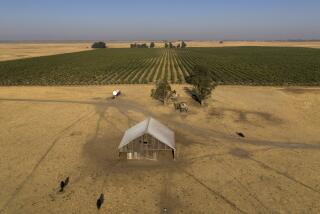Four options for Rim of the Valley
- Share via
In 2008, Congress authorized the National Park Service to study the feasibility of adding a large patchwork of Southern California open space to the Santa Monica Mountains National Recreation Area.
With about 155,000 acres, the recreation area is already the world’s largest urban national park, according to the National Park Service. Its current annual budget is $8.6 million.
The agency has looked at four options:
•Alternative A: This would leave the recreation area’s boundaries unchanged.
•Alternative B: The park service would develop conservation partnerships with other agencies and landowners in the study area. The one-time cost of that effort could range from $500,000 to $700,000.
•Alternative C: This option, the agency’s choice, would append 173,000 acres to the Santa Monica Mountains National Recreation Area. It would add as much as $2 million in cost to the agency’s annual budget.
•Alternative D: Favored by Democratic Rep. Adam B. Schiff and his supporters, this option would add about 313,000 acres, excluding any land in the Angeles and Los Padres national forests and the newly created San Gabriel Mountains National Monument, which would continue to be managed by the U.S. Forest Service. This option would add as much as $3.4 million in costs to the agency’s annual budget.
The Rim of the Valley study also calls conceptually for completing a Rim of the Valley trail.
Once the National Park Service has settled on an option, Schiff plans to sponsor the necessary legislation. If Congress approves the proposal, it would also be responsible for finding the funds to pay for it.
There is no guarantee that Congress will act.
“Sometimes there’s no action,” said Anne Dove, project manager for the National Park Service. “Sometimes Congress moves forward with a different proposal.” She said the Park Service favored the smaller addition because it was less complicated and costly.
The Park Service has held several public meetings about the proposal, with a final one to come on June 2 in Los Angeles. Members of the public may submit comments through June 30. A copy of the draft report is available online.
Twitter: @MarthaGroves
More to Read
Sign up for Essential California
The most important California stories and recommendations in your inbox every morning.
You may occasionally receive promotional content from the Los Angeles Times.










